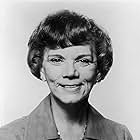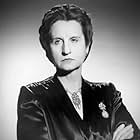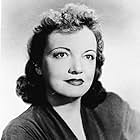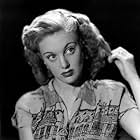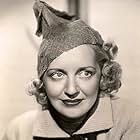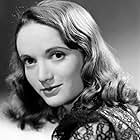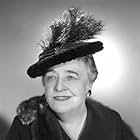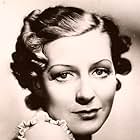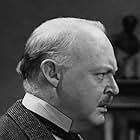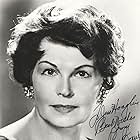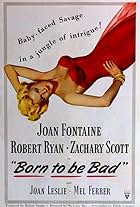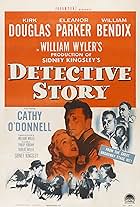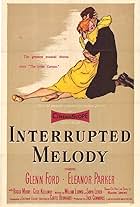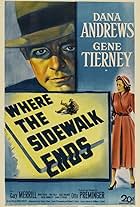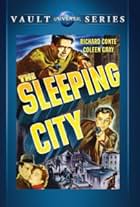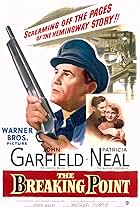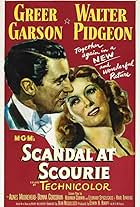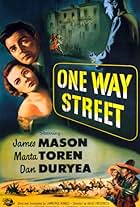A gentle, naive, pregnant 19-year-old widow is slowly, inexorably ground down by the hardened criminals, sadistic guards, and matron at a woman's prison. Will she be the same person when her... Read allA gentle, naive, pregnant 19-year-old widow is slowly, inexorably ground down by the hardened criminals, sadistic guards, and matron at a woman's prison. Will she be the same person when her sentence is up?A gentle, naive, pregnant 19-year-old widow is slowly, inexorably ground down by the hardened criminals, sadistic guards, and matron at a woman's prison. Will she be the same person when her sentence is up?
- Nominated for 3 Oscars
- 1 win & 5 nominations total
Sheila MacRae
- Helen
- (as Sheila Stevens)
Gertrude Astor
- Inmate
- (uncredited)
George Baxter
- Jeffries
- (uncredited)
Guy Beach
- Mr. Cooper
- (uncredited)
Don Beddoe
- Commissioner Sam Walker
- (uncredited)
Gail Bonney
- Inmate
- (uncredited)
Lovyss Bradley
- Inmate
- (uncredited)
Ralph Brooks
- Man in Car
- (uncredited)
Storyline
Did you know
- TriviaAfter I Am a Fugitive from a Chain Gang (1932) led to prison reform in six states, Warners producer Jerry Wald wanted to do the same for women's prisons and sent former newspaper reporter Virginia Kellogg out. She had written a novel that became a Kay Francis film, Mary Stevens, M.D. (1933), about a doctor who bears a child out of wedlock. She had also written well-researched original stories that were the basis for T-Men (1947), about treasury agents, and White Heat (1949), starring James Cagney as a psychotic gangster. She spent months doing research for Caged (1950) at prisons around the country, and was even briefly incarcerated in one of them. Her research is evident in the script with authentic prison slang of the era, and details of prison life, such as the caste system, and the tedium of daily life. Virginia Kellogg and Bernard C. Schoenfeld received an Oscar® nomination for Caged (1950)'s story and screenplay.
- GoofsAn inmate, Georgia Harrison, gets hysterical and breaks the window in her corridor. In this case, the window was inside the bars, which is why the glass would be in a protected and unreachable position. Instead, the bars would have been placed first inside, then the glass further away. The glass would probably be re-enforced glass with wire or even safety glass. Otherwise, an inmate could do just what Georgia did, break it. Then pieces of the glass could be used against other inmates or even prison employees. But then if the glass was safety glass, the scene with Georgia breaking the window would not have been quite so dramatic.
- Quotes
Helen: [referring to a newly paroled Marie Allen] What shall I do with her file?
Ruth Benton: Keep it active. She'll be back.
- ConnectionsEdited into House of Women (1962)
Featured review
No need to repeat the plot.
Catch that long tracking shot of Harper (Emerson) taking inmate attendance one-by-one. It goes on much longer than expected as each inmate gets a brief moment on screen. Importantly, we see that each is a perfectly ordinary looking woman far from the usual Hollywood glamour type. I single out this minor scene because it's director Cromwell's way of showing the film's serious intent despite all the gripping melodramatics.
What the movie does so effectively is combine first-rate melodramatics with a powerful case for liberal reform. That's because, despite its mission, the prison amounts to a breeding ground of criminality. For example, nineteen-year old Marie (Parker)"flops" in as a wide-eyed innocent but leaves as a hardened criminal; guard Harper's sadism and influence-peddling flourishes; day-to-day routines strip inmates of self-respect; the medical dispensary remains under-funded and filthy; while the entire package is held together by state politics, skimpy budgets, and behind the scenes string-pulling. Apparently screenwriter Kellogg researched her subject, so likely the subtext mirrors much of the reality of the time.
Understandably, this message part is over-shadowed by some of the strongest and most unusual dramatic acting of the period. Seldom has any film featured as many mannish women as this one, and at a time when feminine stereotypes not only prevailed but excluded all else. The producers went out on a limb with this one. But it paid off with two memorable performances-- Emerson's shambling gait and slow-motion cruelty, along with queen-bee Garde's sudden descent into hollow-eyed dementia. The results here are both exotic and unforgettable.
One scene has stayed with me over the years. Marie expects some relief as lights go out on her first night in prison. But then the real horror starts. All the pent-up emotions and adjustments of the day come tumbling out—the crying, the coughing, an animal scream. Marie hunkers down in the sheets, wide-eyed awake. Now she knows. There is no relief. Not even in the dark. The prison nightmare never ends.
This is one of the daring gems of the noir period before the Cold War retreat of the 1950's. Thanks to a powerful convergence of movie-making, the movie's as riveting now as it was then. Don't miss it.
Catch that long tracking shot of Harper (Emerson) taking inmate attendance one-by-one. It goes on much longer than expected as each inmate gets a brief moment on screen. Importantly, we see that each is a perfectly ordinary looking woman far from the usual Hollywood glamour type. I single out this minor scene because it's director Cromwell's way of showing the film's serious intent despite all the gripping melodramatics.
What the movie does so effectively is combine first-rate melodramatics with a powerful case for liberal reform. That's because, despite its mission, the prison amounts to a breeding ground of criminality. For example, nineteen-year old Marie (Parker)"flops" in as a wide-eyed innocent but leaves as a hardened criminal; guard Harper's sadism and influence-peddling flourishes; day-to-day routines strip inmates of self-respect; the medical dispensary remains under-funded and filthy; while the entire package is held together by state politics, skimpy budgets, and behind the scenes string-pulling. Apparently screenwriter Kellogg researched her subject, so likely the subtext mirrors much of the reality of the time.
Understandably, this message part is over-shadowed by some of the strongest and most unusual dramatic acting of the period. Seldom has any film featured as many mannish women as this one, and at a time when feminine stereotypes not only prevailed but excluded all else. The producers went out on a limb with this one. But it paid off with two memorable performances-- Emerson's shambling gait and slow-motion cruelty, along with queen-bee Garde's sudden descent into hollow-eyed dementia. The results here are both exotic and unforgettable.
One scene has stayed with me over the years. Marie expects some relief as lights go out on her first night in prison. But then the real horror starts. All the pent-up emotions and adjustments of the day come tumbling out—the crying, the coughing, an animal scream. Marie hunkers down in the sheets, wide-eyed awake. Now she knows. There is no relief. Not even in the dark. The prison nightmare never ends.
This is one of the daring gems of the noir period before the Cold War retreat of the 1950's. Thanks to a powerful convergence of movie-making, the movie's as riveting now as it was then. Don't miss it.
- dougdoepke
- Apr 4, 2010
- Permalink
Details
- Runtime1 hour 37 minutes
- Color
- Aspect ratio
- 1.37 : 1
Contribute to this page
Suggest an edit or add missing content












